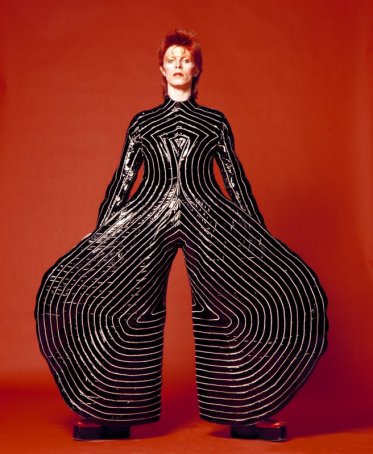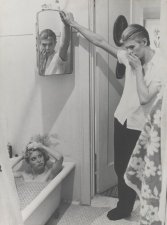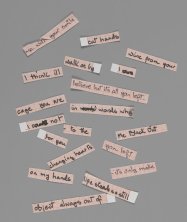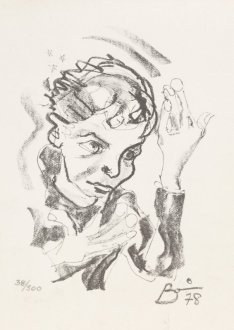-

-
Led Zeppelin: Houses of the Holy
-

-
Muse: Absolution
-

-
Pink Floyd: Wish You Were Here

- The Cranberries: Wake Up and Smell The Coffee
Storm Thorgerson, the visionary behind some of the most striking album covers in rock, died yesterday. He originally wanted to be a film director, and in a way, his images all feel like found scenes from a wider movie. I conducted a fascinating interview with him in 2007, in the arts supplement I edited at the Saturday Times. This was the story:
If the future of music lies in downloads, one man will suffer more than most. After 39 years as Britain’s foremost designer of album covers, during which his canvas has already shrunk from 12 inches of vinyl to 5 inches of CD, Storm Thorgerson will be out of a job.
Storm who? Though more joints have been rolled on his artwork than George Michael could smoke in ten lifetimes, few know Thorgerson by name. That’s about to change with the publication of Taken by Storm, an extraordinary collection of his works, profusely annotated with barmy yarns about their genesis.
The Dark Side of the Moon prism? That was his. The burning businessman on the sleeve of Wish You Were Here? His too. The naked children scaling the Giants Causeway on Led Zeppelin’s Houses of the Holy; the tearful housewife on 10cc’s How Dare You; even, moving on to the present day, the four men playing cards in the desert on Muse’s Black Holes and Revelations. All his.
Before we meet in a café in Belsize Park, North London, I get the tour of Thorgerson’s next-door flat-cum-studio which he has owned since the 1970s. It’s as random as the man: bits of paper pinned up on the wall, with sketches of ideas and works-in-progress. Here are two gunfighters, one flinging fruit, the other with a coat made of balls – tennis balls, billiard balls, all kinds of balls. Turns out it’s for a project with Bob Dylan. It’s Thorgerson’s young colleague, Dan Abbott, who shows me around. Abbott is the draughtsman who fleshes out Thorgerson’s ideas, before a photographer shoots them. Similarly, many of the most striking covers of the early 1970s owe a considerable debt to the graphic designer George Hardie, among other contributors. Thorgerson himself mainly provides the concepts, and the drive to see them realised.
“That’s why I prefer to describe these shoots as ‘performances’,” Thorgerson explains airily, squeezing himself into the café bench and parking his walking stick. “I’m more like a choreographer; and the choreographer needs the dancer, doesn’t he?” He fell into designing sleeves quite by accident. Pink Floyd, whom he knew anyway from school, asked Thorgerson’s flatmate to do a record cover. When he declined, Thorgerson stuck up his hand. “I had no idea what I was doing! But we did make the most of it. Me and Po [Aubrey Powell, with whom he founded the design company Hipgnosis] worked bloody hard.”
He had previously intended to be a film director, inspired by seeing Fellini’s 8½ and Antonioni’s L’Avventura, and he studied cinema at the Royal College of Art. But if there is a director he most resembles, it’s Werner Herzog, pulling a real steamboat over a real mountain in the Peruvian jungle for his famously gruelling and epically insane film Fitzcarraldo. Thorgerson insists on doing almost all his shoots for real, long after digital trickery should have made most of his surreal, dream-like images simple to create.
It’s an admirable folly that may or may not produce better results, as he claims, but which certainly makes for an entertaining anecdote. One cover concept called for a row of 20ft telegraph poles stretching into the distance, each topped with a seated hermit. The ground was muddy and the huge poles kept slipping; Thorgerson had to climb up one himself to show his volunteers they would be safe. The cover for Pink Floyd’s A Momentary Lapse of Reason showed 700 heavy iron hospital beds arrayed on the beach, something that took four tractors and 30 helpers six hours to accomplish. England being England, it rained, so they had to take them all away again . . . and repeat this lapse of reason in its entirety two weeks later.
Thorgerson’s upbringing, you won’t be surprised to hear, was unconventional. If you think his name is unusual (it comes from his uncle, and is not uncommon in Norway), consider that his mother called him Geraldine for his first nine months – in what he calls, unable to resist verbal as well as visual puns, the “dark side of the womb”.
He was packed off to boarding school at just 4½ – “If you want to know why I’m mad, there you are” – and because of its progressive views about not forcing education, he didn’t learn to read until he was 9. It was at grammar school in Cambridge that he met Roger Waters and Syd Barrett, who later would form Pink Floyd. “I was friends with Roger indirectly because our mothers were friends, and still are, at 88 and 94 respectively.
“It was a very interesting place, Cambridge; student towns can be great fun, even if you’re not studying there. There’s a lot of culture . . . and a lot of girls. Most of whom actually seemed to end up with Syd. I still know all these guys; I would have known Syd still, too, till he died, if he hadn’t gone off the rails.” But didn’t he once say that he had not spoken to Waters in 30 years? “Twenty-five,” Thorgerson corrects. “But he’s friendly now. Roger had a particular way of dealing with things, which requires him to be more definite than he needs. He was very rigid about who was what in the Pink Floyd hierarchy, and I got put into a box, and he’s only opened the lid recently.”
In fact, during our meeting, he receives a cryptic message by mobile: “Roger has no objection.” This turns out to concern Thorgerson and Abbott’s suggestion of a 40th anniversary rerelease of The Piper at the Gates of Dawn, and the publication of a book of Syd Barrett’s sketches, in tribute to that crazy diamond.
And is Barrett still missed? Did Thorgerson see him again before he died? He shakes his head. “His death was more or less so sad there’s nothing one can think to say. The band have always felt very strongly about Syd, so tabs were kept, as it were, money was paid; as best they could, they looked after him.”
It’s a rare moment of vulnerability from a self-confessed egomaniac, a man with the chutzpah to persuade a doubtful record company to release Wish You Were Here wrapped in black plastic (to symbolise absence, professor), or to release Led Zeppelin’s In Through the Out Door with six alternative sleeve designs – and then cover it in a brown paper bag.
“Pictures of a band, like the Beatles, or Take That, what do they tell you? They tell you what they look like, but nothing about what’s in their hearts, or in their music. If you were trying to present an emotion, or a feeling, or an idea, or a theme, or an obsession, or a perversion, or a preoccupation, when would it have four guys in it? In the huge world of things to choose to represent it, why choose four guys?”
Particularly when, as with Thorgerson’s early run of covers for Pink Floyd, you can have a cow, then an ear under water, then a prism, then a man on fire, then a giant inflatable pig (Roger Waters’s idea) which infamously escaped from its moorings, floated to 18,000 ft and nearly gave the jet pilot who radioed in the sighting a heart attack. Music downloads may be the future, but they will never be this much fun.
Tags: album cover, Animals, Aubrey Powell, Dan Abott, design, died, Fitzcarraldo, Hipgnosis, In Through The Out Door A Momentary Lapse of Reason, Muse, Pink Floyd, pink pig, RIP, Roger Waters, Storm Thorgerson, Syd Barrett, Taken by Storm






















